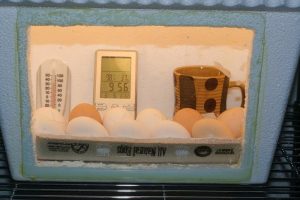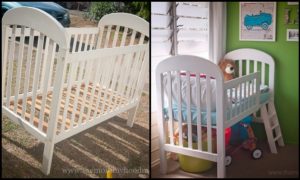Last Updated on March 12, 2024 by teamobn
Raising chickens in your backyard? Here’s one garden idea that will make you AND your chickens happier! A chicken tunnel!
A chicken tunnel is a type of movable chicken coop that allows chickens to roam freely while still providing protection from predators. The tunnel is typically made of chicken wire and has a door at each end that can be opened or closed to allow the chickens to enter or exit. Chicken tunnels can be used in a variety of settings, including backyard chicken coops and commercial chicken farms.
By making a movable chicken tunnel, chooks become effective helpers around the garden since you can direct them to areas that need to be taken care of. This is a great way to use the natural scratching and foraging instinct of the chicken to your benefit, while also giving the chicken a chance to exercise.

If you’re looking for a way to let your chickens roam freely without having to worry about predators, a chicken tunnel is a great option. Your chickens will be able to run and explore to their heart’s content, and you’ll be able to relax knowing that they’re safe. Plus, they’re sure to love the extra space and freedom!
The size of your chicken tunnel should depend on the size of your flock. If you have a small flock, you can get away with a smaller tunnel. However, if you have a large flock, you’ll need a larger tunnel to accommodate them.

You’re happy, and the chickens are happy — what’s not to love?
Contents
Building a Chicken Tunnel
Materials
- 4′ Wire Fencing
- 1″ thick Wood Slats / PVC Pipes
- Bungee Cords / Zip Ties
- Wood Screws
Tools
- Wire Cutter
- Saw
- Drill
Instruction
One way to build a chicken tunnel is to simply attach some chicken wire to some existing fencing. This can be a quick and easy way to add a chicken tunnel to your property, and it won’t take up too much space.
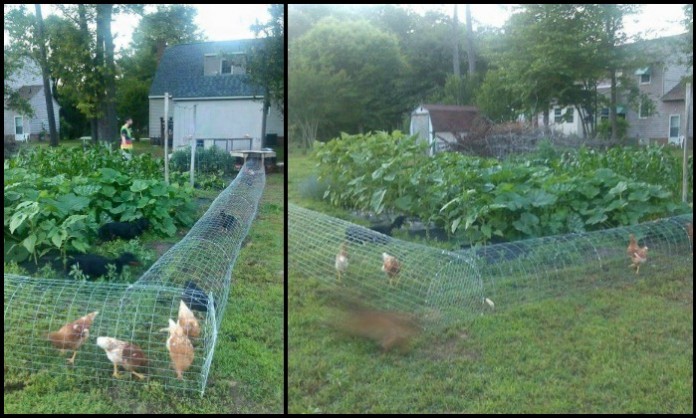
Another way to build a chicken tunnel is to construct a frame out of wood or PVC pipe. You can then cover this frame with chicken wire or other poultry netting. This option will take a bit more time and effort. So let’s get started with this one!
Prepare the Materials and Tools needed
In this project, we will be using a few tools such as a wire cutter, saw, and drill. We will also need some materials like wood screws, wire fencing, wood slats, zip ties, and bungee cords. With these tools and materials, we will be able to create a sturdy and durable chicken run that will last for years.
The Dimensions
When deciding on the dimensions of your chicken tunnel, you will need to consider the number of chickens that will be using the tunnel, as well as the average size of the chickens. A good rule of thumb is to make the tunnel at least 2 feet wide and 2 feet tall for every 10 chickens. This will ensure that the chickens have plenty of space to move around and are not crowded.
The Base
If you plan on moving your chicken tunnel around often, it’s important to have a solid base. This will make it much easier to pick up and move, and will also help protect your chickens from predators. A simple base can be made out of wood slats or PVC pipes. For extra protection, you can cover the base with chicken wire or hardware cloth.
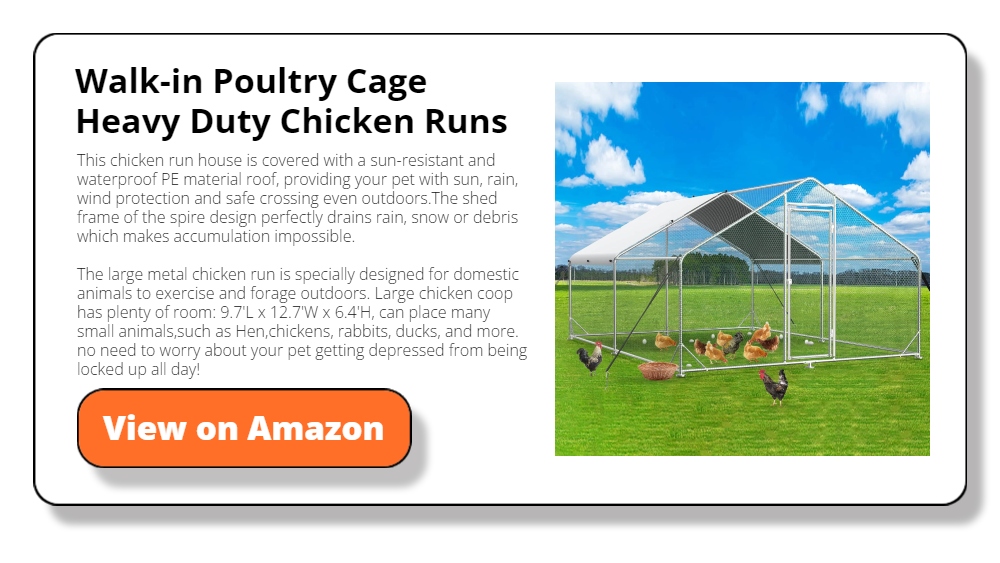
To create a stable, long-lasting tunnel structure, it is advisable to create a series of rectangular bases for your tunnel. This will ensure that your tunnel does not collapse over time and can withstand any external forces. By creating a series of bases, you will also be able to create a stronger overall tunnel structure.
The Tunnel
The wire fencing will be attached to the base of your chicken tunnel.
You can choose to have a rectangular tunnel or a curved one. If you choose a rectangular tunnel, you will need to make a series of rectangular frames that are attached to the base where you can attach the chicken wire or wire fencing using staples or zip ties.
To create a curved chicken tunnel, simply attach the wire fencing to the base using zip ties. Bend the fencing toward the opposite side of the base to create the desired curve. Ensure the curve is gradual so the chickens can easily walk through the tunnel.
Note:
When cutting wire fencing, be extra careful to avoid injury. Always use gloves and eye protection, and be aware of the risk of sharp edges. When cutting, use a slow, controlled motion to avoid accidents.
Benefits of a Chicken Tunnel to Your Garden
Integrating chickens into a garden environment offers a multitude of benefits, not only for the garden itself but also for the overall ecosystem and the garden’s productivity. While the initial thoughts about raising chickens might revolve around the fresh eggs they provide, their role can extend beyond this to include pest control, soil improvement, and waste management.
Here’s a deeper look into how chickens can be beneficial in the garden:
Natural Fertilization
One of the most immediate benefits of having chickens in the garden is the natural fertilization process they contribute to. Chicken manure is high in nitrogen, an essential nutrient for plants. It also contains balanced amounts of phosphorus and potassium, which are crucial for the health of garden plants.
However, direct application of fresh chicken manure can be too strong for plants and may cause burn due to its high nitrogen content. Composting the manure first can help to mellow the nutrients, making it an excellent, balanced fertilizer that can boost plant growth without the adverse effects.
Pest and Weed Control
Chickens are natural foragers. They spend a significant amount of their day pecking and scratching at the ground in search of food, which includes a wide variety of pests such as snails, slugs, and various insect larvae. This behavior makes them an effective solution for controlling pest populations in the garden without the need for chemical pesticides.
In addition to pests, chickens also eat weed seeds, helping to keep unwanted vegetation at bay. Their foraging helps to reduce the gardener’s workload in managing weeds and pests, making gardening a more enjoyable and less labor-intensive activity.
Soil Aeration and Tilling
As chickens scratch the ground to unearth bugs and seeds, they inadvertently aerate the soil. This aeration benefits the garden as it improves soil structure, allowing air, water, and nutrients to penetrate more deeply and reach plant roots more effectively.
Additionally, this scratching action can serve as a gentle tilling mechanism. It mixes organic matter into the soil, enhancing its fertility and structure. By incorporating chicken activity into the garden, gardeners can reduce their reliance on mechanical tillers, which can compact soil and disrupt soil microbiota.
Waste Recycling
Chickens can transform kitchen scraps, garden waste, and even their manure into valuable resources for the garden. Gardeners can reduce household waste by feeding chickens vegetable peels, fruit scraps, and other biodegradable kitchen waste while providing a healthy diet for their chickens.
This practice not only recycles waste but also helps to produce richer, more nutritious eggs. The cycle of using garden and kitchen waste to feed chickens, which in turn produce manure that is composted and used to fertilize the garden, creates a sustainable loop that benefits both the garden and the environment.
Enhancing Biodiversity
Introducing chickens to a garden ecosystem can help to increase its biodiversity. Chickens contribute to a more dynamic soil and garden environment, attracting beneficial insects and promoting a balance that can make gardens more resilient to pests and diseases. By fostering a diverse ecosystem, gardeners can enjoy healthier plants and a more vibrant garden.
The integration of chickens into the garden goes beyond the conventional benefits of egg production. It offers a natural and efficient way to enhance soil fertility, control pests and weeds, and recycle waste. By understanding and leveraging the symbiotic relationship between chickens and the garden, gardeners can create a more productive, sustainable, and enjoyable gardening experience.
Click on any image to start the lightbox display. Use your Esc key to close the lightbox.![]()
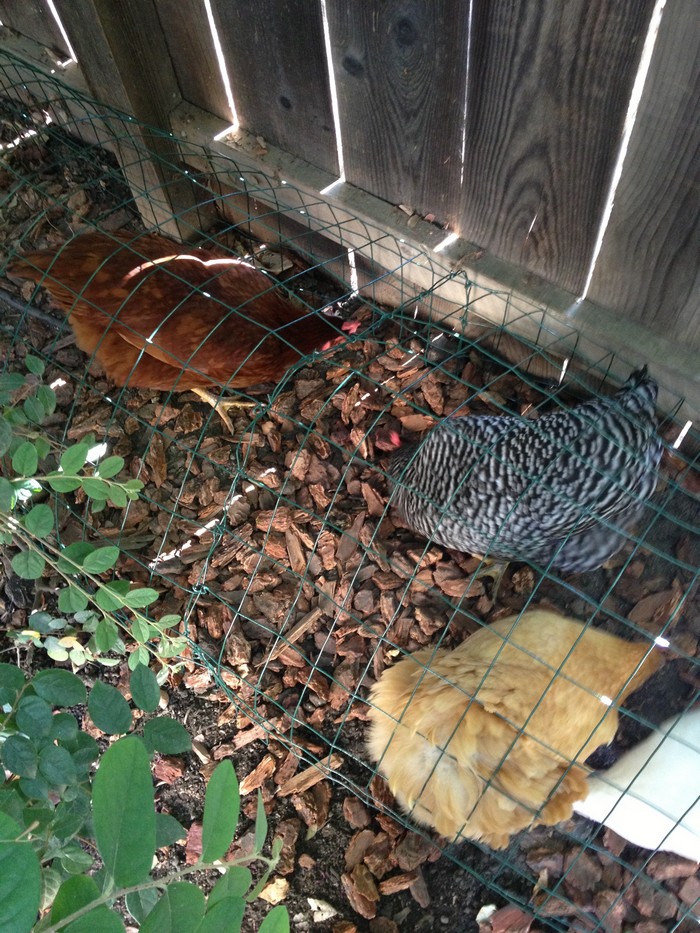
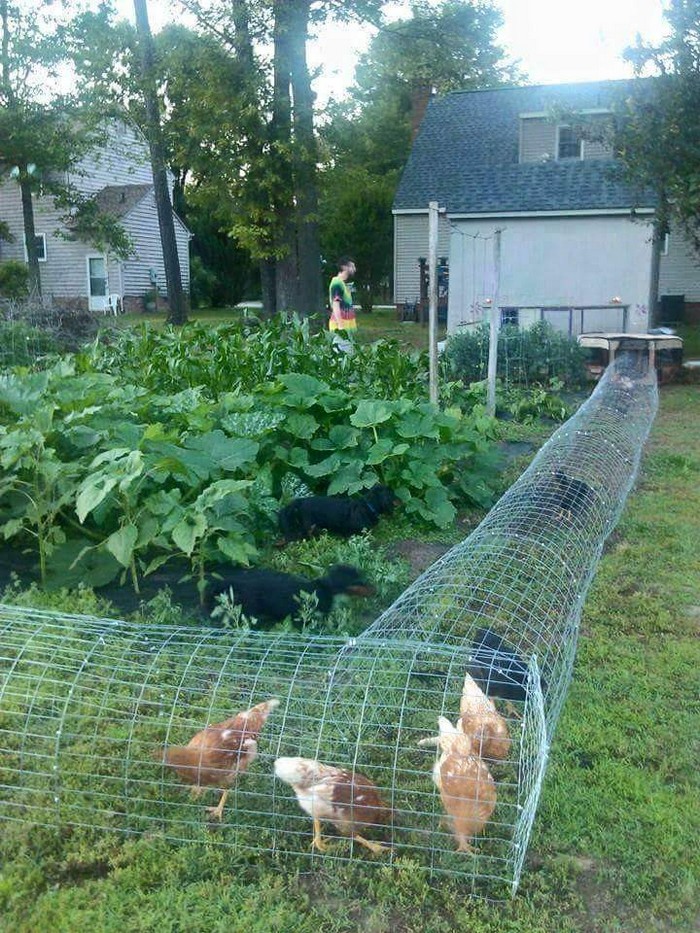
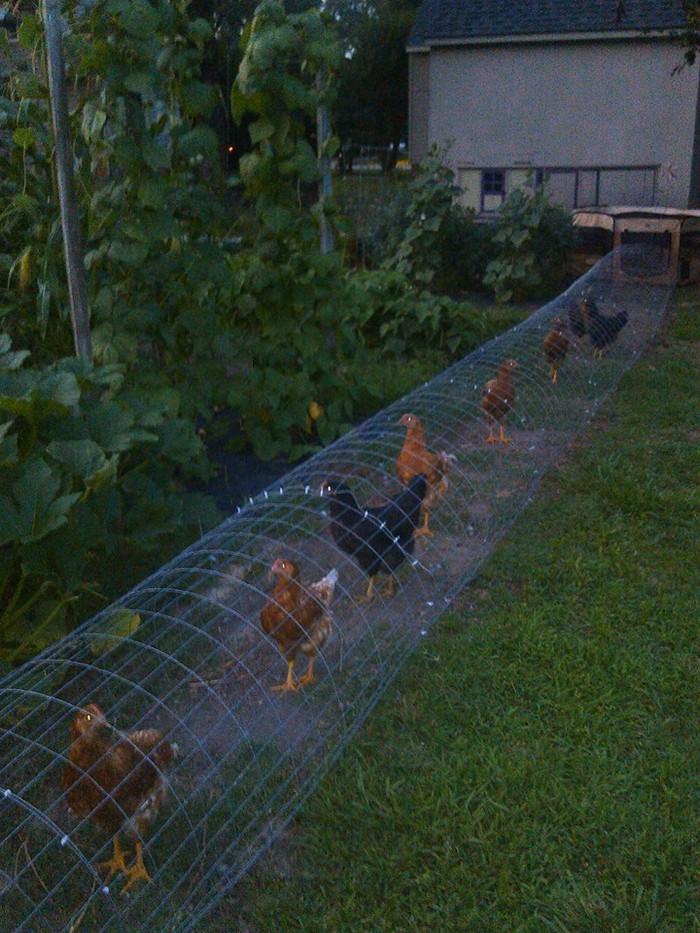

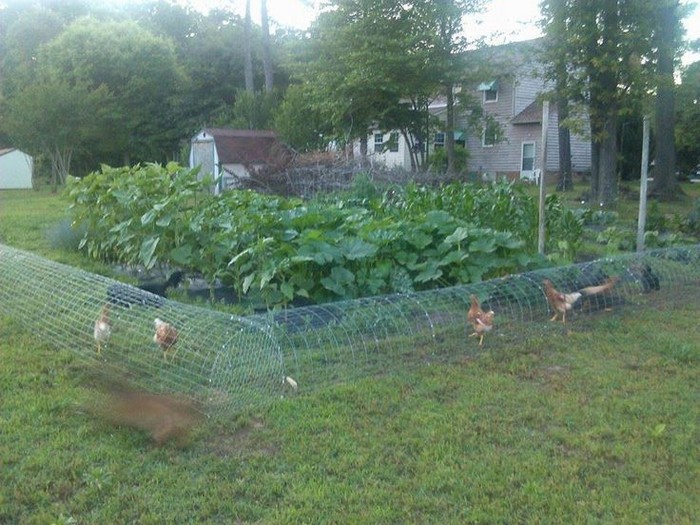
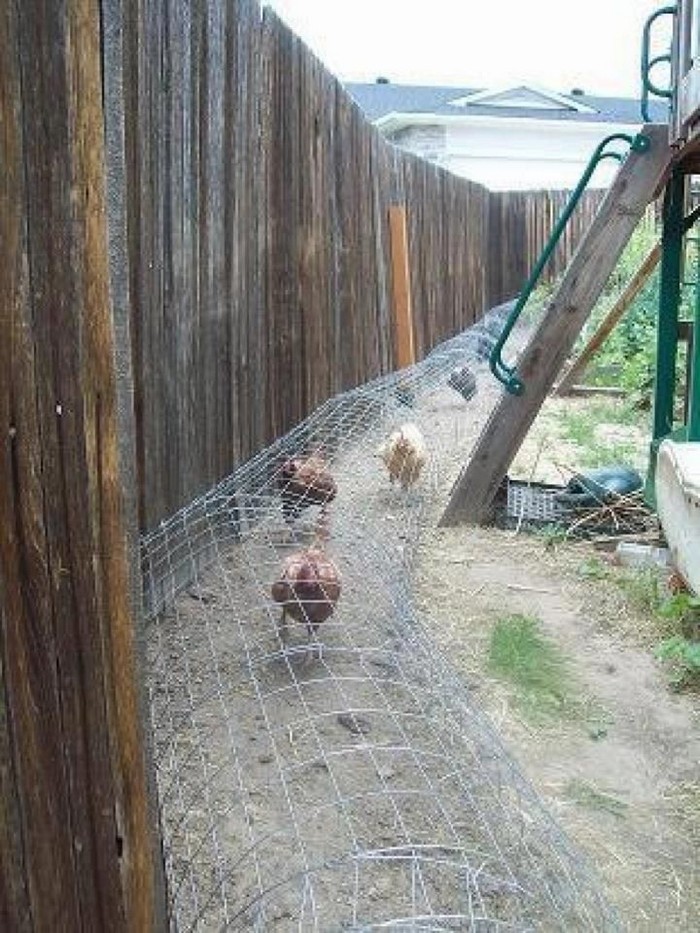
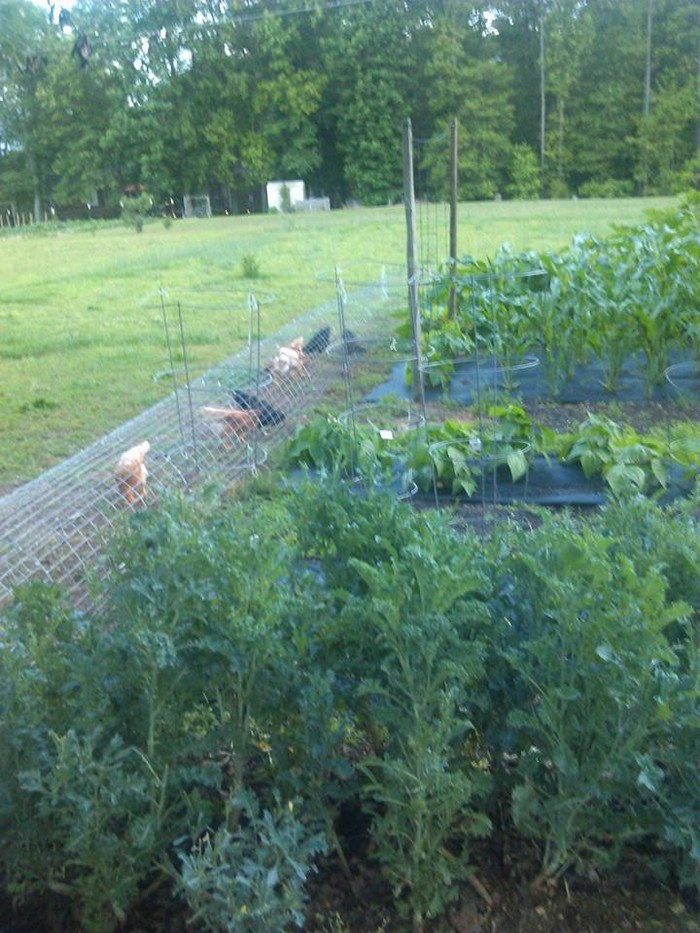
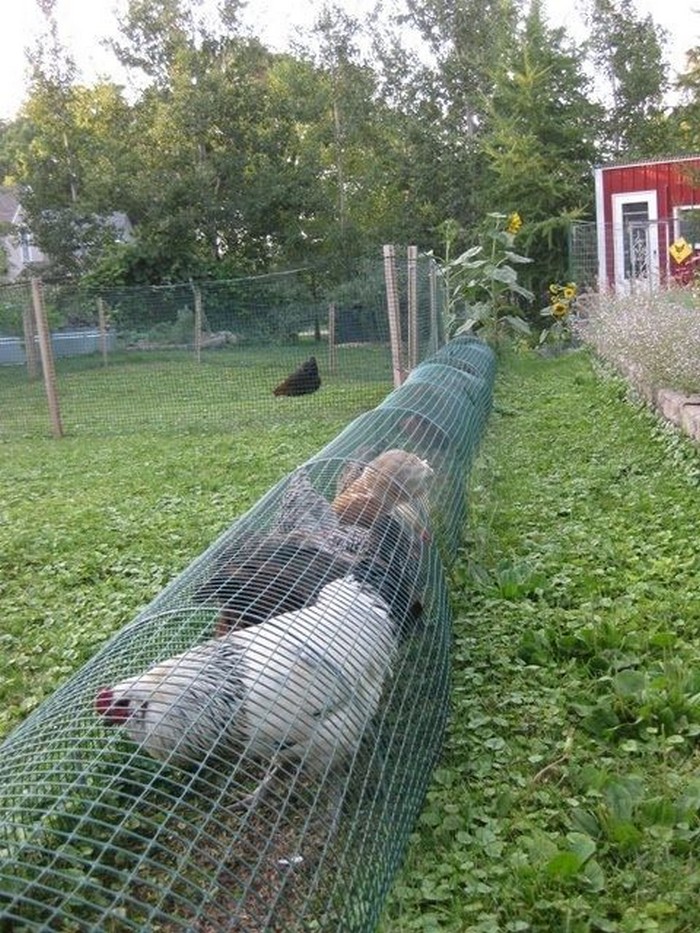
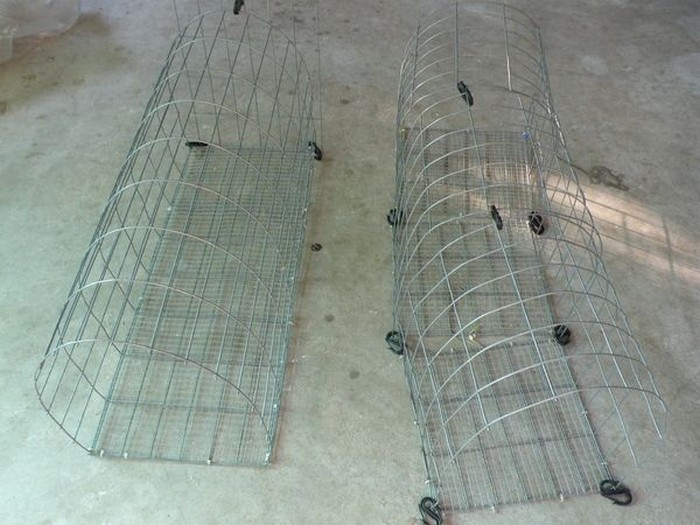
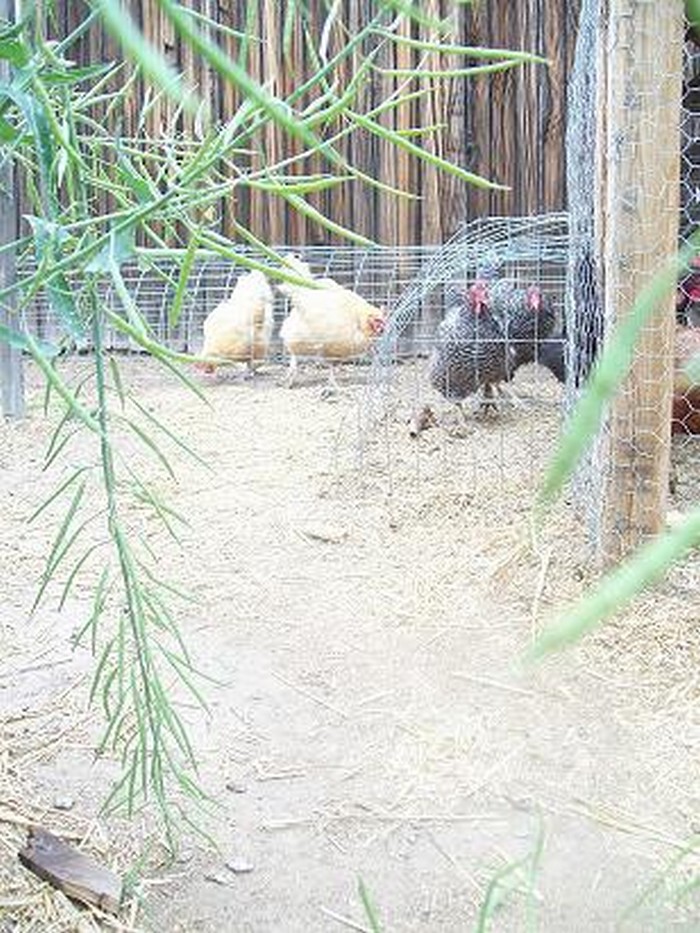
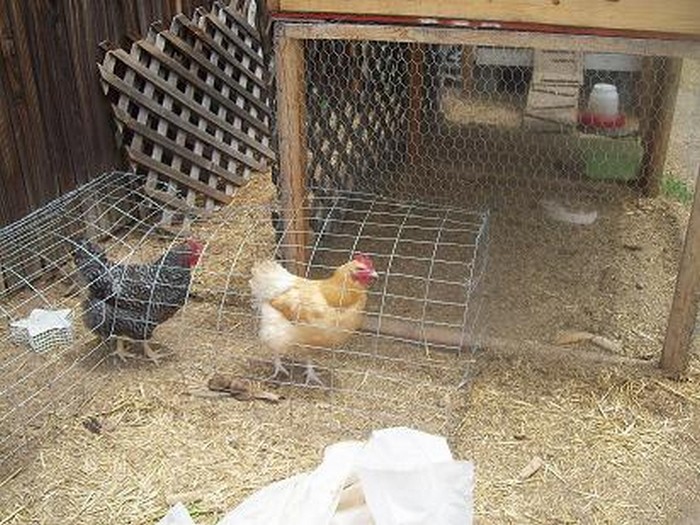
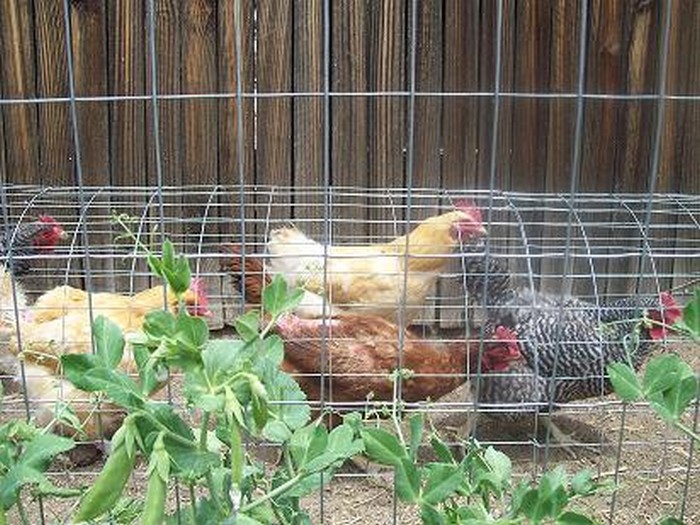
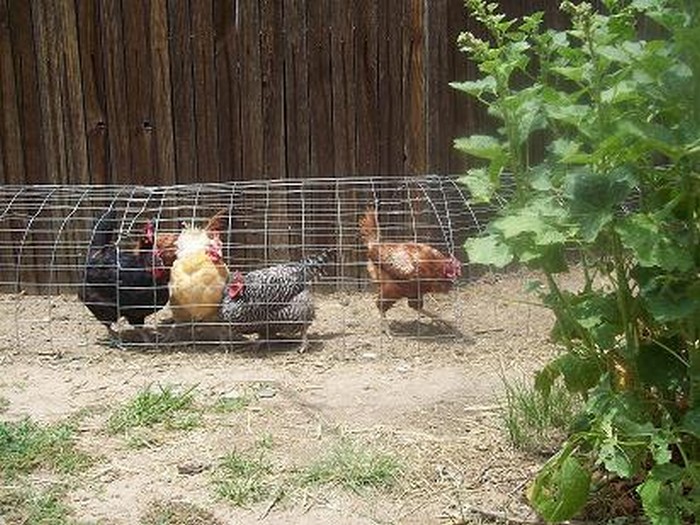
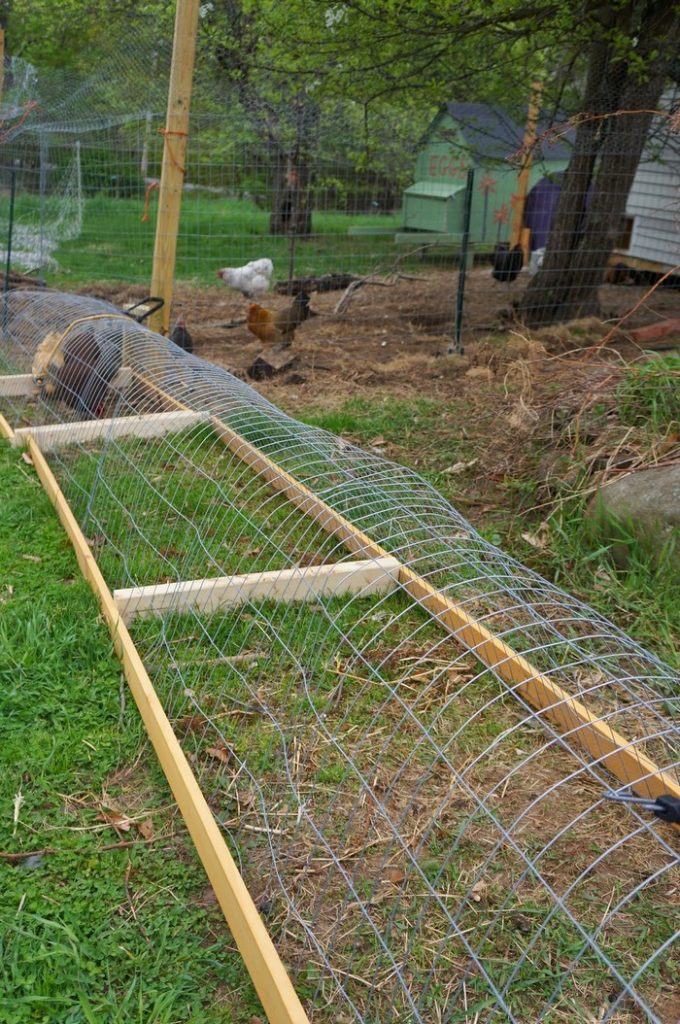
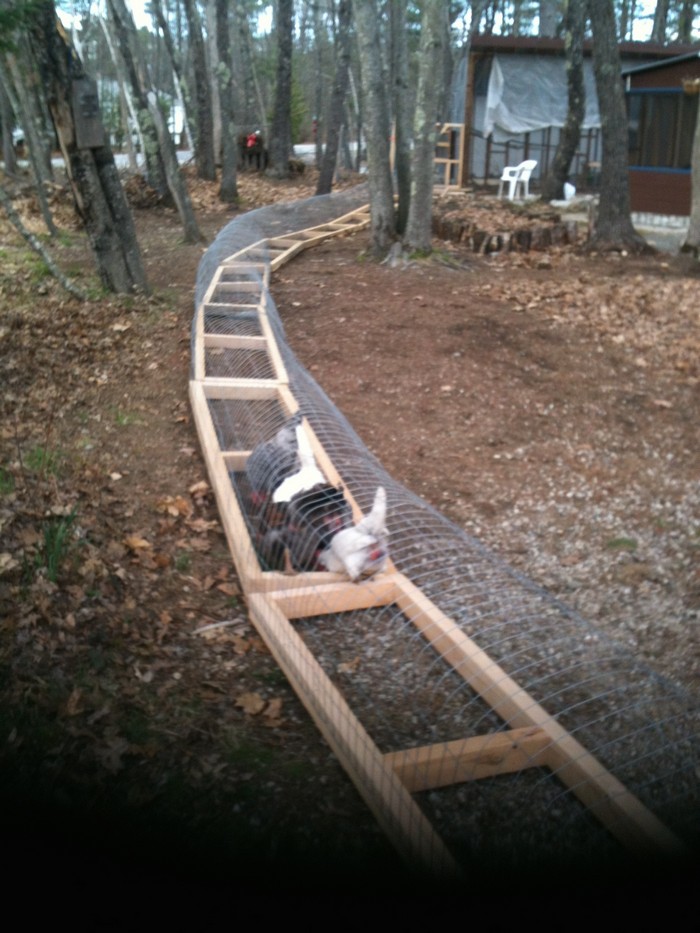
Integration with Permaculture Practices
Integrating chickens into permaculture practices presents an innovative way to enhance the sustainability and productivity of gardens and farms. Permaculture, a design system for creating sustainable human habitats, emphasizes the harmonious integration of the landscape, plants, animals, and people.
With their natural behaviors and benefits, Chickens fit perfectly into this system, providing a practical example of permaculture principles in action. The chicken tunnel becomes a pivotal element in this integration, facilitating the movement and management of chickens within the permaculture garden to benefit both the chickens and the garden ecosystem.
Harmonious Integration
At the core of permaculture is the principle of working with nature, rather than against it. Integrating chickens into a permaculture design involves creating a space where chickens can perform their natural behaviors, such as scratching, foraging, and dust bathing, in a way that supports the garden’s health and productivity.
A chicken tunnel serves as a pathway that connects different parts of the garden, allowing chickens to access various areas for foraging and pest control, without damaging sensitive plant beds or young seedlings. This selective access ensures that chickens contribute positively to the garden’s ecosystem without causing harm.
Enhancing Soil Health
Chickens play a crucial role in building healthy soil, a fundamental aspect of permaculture. Through their droppings, chickens provide high-quality manure rich in nitrogen, phosphorus, and potassium.
When integrated into a composting system, chicken manure enriches the soil, promoting robust plant growth. The chicken tunnel can be strategically placed to direct chickens to areas where their scratching and manure can improve soil structure and fertility, such as fallow beds or composting areas.
Pest and Weed Management
In permaculture, every element serves multiple purposes, and chickens are no exception. As natural pest controllers, chickens help manage insect populations, reducing the need for chemical interventions. By moving chickens through the garden via a chicken tunnel, they can target areas with high pest infestations, providing organic pest control.
Similarly, chickens consume weeds and their seeds, helping to manage unwanted plants. The chicken tunnel allows for the controlled movement of chickens to specific weed-prone areas, minimizing labor-intensive weeding.
Closing the Loop
Permaculture emphasizes closed-loop systems, where outputs from one element become inputs for another, creating a cycle of renewal. Chickens contribute to closing the loop by converting kitchen scraps and garden waste into valuable compost material.
The chicken tunnel facilitates this process by allowing chickens to access composting areas directly, where they can forage for scraps and contribute to the composting process with their manure. This integration reduces waste and enhances soil fertility, embodying the permaculture principle of turning problems into solutions.
Biodiversity and Resilience
Finally, chickens contribute to the biodiversity of a permaculture system. By integrating chickens and using a chicken tunnel to manage their movement, gardeners can increase the ecological diversity of their space.
This diversity, in turn, enhances the garden’s resilience, making it more adaptable to changes and disruptions. The presence of chickens attracts beneficial insects and promotes a balanced ecosystem, crucial for sustainable and resilient gardening practices.
Incorporating chickens into permaculture practices through the use of a chicken tunnel exemplifies permaculture’s holistic approach to gardening and farming. By aligning the natural behaviors and benefits of chickens with the needs and functions of the garden, gardeners can create more sustainable, productive, and harmonious ecosystems.
The chicken tunnel facilitates the integration of chickens into the garden and enhances the garden’s health, productivity, and sustainability, making it a valuable component of permaculture design.
Chicken Tunnel Design Variations
Incorporating chicken tunnels into a garden setup not only enhances the functionality of the space but also introduces a dynamic element that supports both the chickens’ well-being and the garden’s health.
Chicken tunnels, designed to allow chickens to safely roam and forage in controlled areas, can vary greatly in design to suit different garden sizes, layouts, and specific needs. This versatility ensures that every gardener can find or create a chicken tunnel solution that works best for their unique situation.
Basic Chicken Tunnel Designs
The simplest form of a chicken tunnel is a straightforward, enclosed pathway made from chicken wire and wooden frames. This basic design is easy to construct and can be adapted to various lengths and shapes depending on the garden’s layout. It allows chickens to move between different areas of the garden, providing them with fresh foraging grounds while keeping them protected from predators.
Modular Chicken Tunnels
For gardeners looking for flexibility, modular chicken tunnels can expand or reconfigure the tunnel system as needed. These tunnels are constructed in segments that can be easily connected or detached, allowing for quick adjustments to the garden layout or chicken access areas. Modular designs are particularly useful for rotating chicken foraging areas to prevent overgrazing and to distribute the natural fertilization evenly across the garden.
Elevated Chicken Tunnels
Elevated chicken tunnels, raised off the ground, are an innovative solution for gardens with limited space or for protecting sensitive ground cover. These tunnels can be constructed using a combination of wooden supports and wire mesh, creating an aerial pathway for chickens to explore. Elevated designs minimize the impact on the garden floor, prevent soil compaction, and can be a unique feature that adds aesthetic appeal to the garden.
Decorative Chicken Tunnels
Who says chicken tunnels have to be purely functional? Decorative chicken tunnels are designed with both aesthetics and utility in mind. Incorporating elements such as curved pathways, ornamental gates, and even living walls made of climbing plants, these tunnels enhance the garden’s visual appeal while serving their primary purpose. Decorative tunnels can become a focal point in the garden, showcasing the harmonious blend of form and function.
Integrated Chicken Tunnels
Integrated chicken tunnels are seamlessly incorporated into the garden’s design, often running along the borders or through specific sections such as orchards or vegetable patches. These tunnels can be designed to blend in with the garden’s landscape, using materials that match or complement other garden structures. Integrated designs maximize the use of space and can enhance the symbiotic relationships between chickens and garden ecosystems, promoting a healthy, thriving garden environment.
Chicken tunnels present a creative and effective way to integrate chickens into the garden, providing them with a safe space to forage and contribute to the garden’s health and productivity. With a range of design variations available, gardeners can customize their chicken tunnels to fit the specific needs and aesthetics of their gardens.
Conclusion
Constructing a chicken tunnel is a rewarding endeavor that marries the functionality of garden management with the natural behaviors of chickens, creating a symbiotic relationship between the two. Through their design, chicken tunnels provide a safe and enriching environment for chickens to forage, aiding in pest control, soil fertilization, and waste management within the garden.
The adaptability of chicken tunnel designs allows them to be integrated into virtually any garden layout, ensuring that both small and large spaces can benefit from their inclusion. Ultimately, incorporating a chicken tunnel into a garden setup enhances the garden’s productivity and health and contributes to a more sustainable and harmonious outdoor living space.
Boost your chicken farm or egg production with our post on the best chicken feeders!


